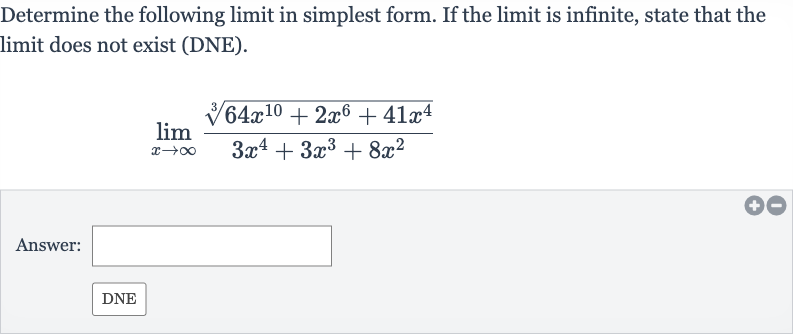Full solution
Q. Determine the following limit in simplest form. If the limit is infinite, state that the limit does not exist (DNE).Answer:
- Divide by : We are given the limit: To simplify this limit, we will first divide the numerator and the denominator by the highest power of in the denominator, which is .
- Simplify terms: Divide each term in the numerator and the denominator by :
- Ignore smaller terms: Simplify each term:
- Take cube root: As approaches infinity, the terms , , , and will approach zero. Therefore, we can ignore these terms for the limit calculation:
- Calculate limit: Now, take the cube root of :
- Limit does not exist: Since grows without bound as approaches infinity, the limit of rac{4x^{2}}{3} as approaches infinity is also infinity. Therefore, the limit does not exist (DNE).
More problems from Power rule
QuestionGet tutor help
QuestionGet tutor help
QuestionGet tutor help
QuestionGet tutor help
QuestionGet tutor help

